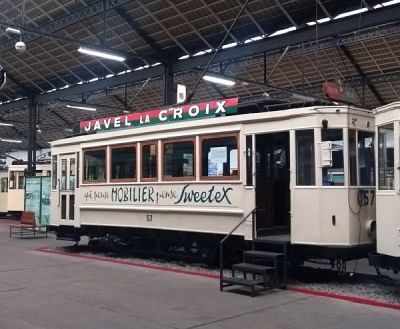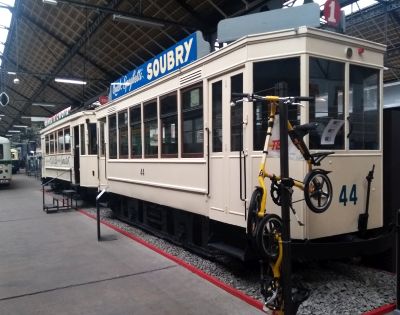City trams in Belgium
There are / have been city tramways (other than NMVB) in the following cities in Belgium:
City tramway : Antwerpen
Introduction
Antwerpen is a big city in the north of Belgium. Todays the city has about 530.000 inhabitants. Around 1880 there were onlys 170.000 inhabitants (although the area of the city was smaller than today).
Lines
In Antwerpen the first horse tram was opened on 1873-05-25, a line from the Meir to the village of Berchem. Later on some more horse trams were opend. To read more about the horse trams, visit my page about the horse tram in Antwerpen.
In 1900 all lines were taken over by the CGTA (Compagnie Générale des tramways d Anvers) with the purpose to electrify the horse tram lines. In 1902 all lines were elektrified. Antwerpen is one of the cities in Belgium were todays there is a large network of tram lines.
In Antwerpen there were also lines of the NMVB. At first the lines of the NMVB ended at the outside of the city center. Long negotiations with the city ended at last (about the year 1930) in running the lines of the NMVB into the city center over the tracks of the city tram of Antwerpen. For details of the NMVB lines, see the detail pages of the NMVB in the province of Antwerpen.
The evolution of the tram network in the city of Antwerpen is too large to be described on this page. To read much more, you can visit the page of the Antwerpse tram on Wikipedia.
City tramway : Brussels
Introduction
Brussel is the main city of Belgium, situated in the middle of the country. Today there are aboutn 200.000 inhabitants, the same amount as around the year 1880. In the agglomeration of Brussel, consisting of 19 communities, there live today around 1,2 million inhabitants
Lines
Brussel was the first town in Belgium where a horse tram was opened. Already in 1869 a short line from the Naamsepoort to the Ter Kamerenbos was opened. Later on the Tramways Bruxellois (TB) opened five tram lines and also another company, the Société Générale de Tramways (CFE), opened some more lines. The lines were laid on normal gauge (1435 mm).
In 1899 the TB started to change its lines to electric trams. Other lines remained in use as horse tram until the outbreak of the First World War. Brussel is one of the cities in Belgium were todays there is a large network of tram lines.
In Brussel there was also a network of lines of the NMVB. As the track width was different (TB: 1435 mm, NMVB: 1000 mm), the lines operated separately. For details of the NMVB lines, see the detail pages of the NMVB in the province of Brabant.
The evolution of the tram network in the city of Brussel is too large to be described on this page. To read much more, you can visit the page of the Brusselse tram on Wikipedia.
City tramway : Gent
Introduction
Gent is a big city in the north western part of Belgium. It is the capitel of the province of Oost-Vlaanderen. Todays the city has about 260.000 inhabitants. Around 1880 there were onlys 130.000 inhabitants (although the area of the city was smaller than today).
Lines
In Gent the first horse tram was opened in 1874, a line from the station to the center of the city at the Korenmarkt. Later on some more horse trams were opend. The lines were laid with track width 1000 mm, like many other tramways in Belgium. To read more about the horse trams, visit my page about the horse tram in Gent.
In 1897 the consession for the lines was given to two companies linked to the RELSE (Liège). Both companies made a new company, the ETG "Elektrische Tramwegen van Gent" which started converting the horse tram into an electric tram. The electricity was aquired from accus in the tram cars. This technique was not enough developed and many problems arose. In 1903 the company replaced the accu by an overhead wire like in other cities.
There have been 11 lines in the past, of which today only 3 remained.
In Gent there were also lines of the NMVB. At first the lines of the NMVB ended at the outside of the city center. Later on lines were extended to the Sint Pieters railway station.
The evolution of the tram network in the city of Gent is too large to be described on this page. To read much more, you can visit the page of the Gentse tram on Wikipedia.
City tramway : Charleroi
Introduction
Charleroi is a conglomeration of several towns and villages where iron processing industry was evident present. Mining industries and steel processing had great influence on the city.
In 1881 a small horse tram opened connecting the railway station Charleroi-Sud via Place Verte to the Rue de Marcinelle. It was laid with track width 1435 mm. The line did not last long. Already two years later the line was closed.
In 1881 a new line was opened from the Sud Railway station to Gilly. This was partly ran by steam trams, partly by horse tram. For more information see the page about the horse tram in Charleroi.
Electric tram
Around 1900 the great NMVB, which had lines in the west of the city, made the conversion to electric trams. The city of Charleroi wanted also to change the steam and horse powered lines in the east of the city to electric running. A new consession was given to the RELSE (s.a. des Railways Economiques de Liège-Seraing et Extensions), the company that ran tram lines in the surroundings of the city of Liège. A sub-company was created the TEPCE (s.a. des Tramways Electriques du Pays de Charleroi et Extensions). The two existing lines were transferred from normal gauge to meter gauge and electrified. They were opened on 4 july 1904.
In the following yeard new lines were opened. Below you can read in what year this happened. Closure began after World War Two, and in 1974 the last tram was gone into the depot.
Maps
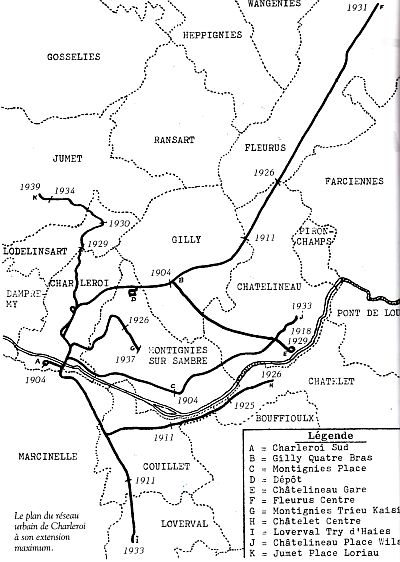
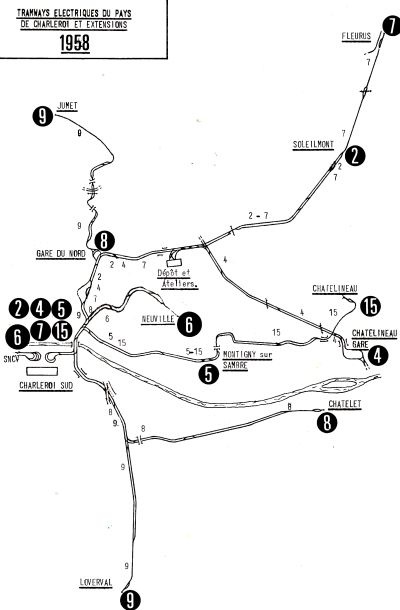
Network
Later on the network was extended. Below you will find the list of opening and closure dates of the lines. See also the map of the network with the line numbers below.
Besides these lines there existed from 1926.05.25 a line number 11, running from Gare du Nord to Couillet Montignies, a part of line 8. Until what date this line was run, is not known to me. |
The line 4 (Gilly - Chatelineau Gare) is special. From earlier date it was part of the network of the NMVB, the line went on westwards to Jumet and also eastwards. After the First World War the line was taken over by TEPCE. But that lasted only for some years. Because of struggling of the right of transport the line went back on 1 january 1923 two NMVB, and after long lasting talkings the line was taken over on 17 september 1929 by the TEPC.
Another singularity was on line 7 to Fleurus. The TEPC planned a ground level crossing with a railay line near Fleurus. All of the line to Fleurus was ready, except the crossing. The railway was steady in forbidding the level crossing. On 6 april 1931 the TEPC brought one tram wagon to the other side of the railway crossing. So it could offer from the opening date on (6 june 1931) a tram service to both sides of the railway crossing, where passengers had to disembark and pass it by foot. This situation lasted until 12 january 1932, when a new viaduct was built over which trams could pass.
Rolling stock
The fleet of rolling stock was extended with the length of the lines in exploitation. The first 17 motor coaches were ordered in 1904. In 19011, 1918 and 1932 some more motor coaches were ordered. And the last 25 motor coaches, built in the NMVB workshop (SELVOP) in Oostende during war time. All carriages were of the type of two axles.
There were also not-motored carriages. Twelve were ordered in the beginning in 1904, some 12 more in 1909 and 8 more in 1915. The first 24 were of type convertible. That means that the side panels could be removed so that the carriages could be run as open carriages. In winter the panels were present so it were closed carriages.
Motor coaches
|
FB = Franco-Belge, La Croyère
Ragh = Ragheno
Selvop = Depot of Selvop (NMVB), Ostende
Trailer coaches
|
Postcards
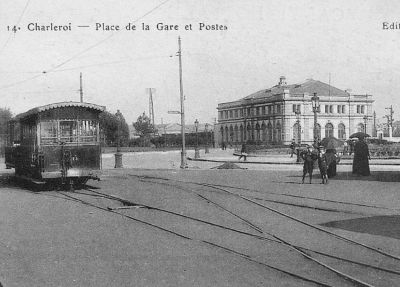
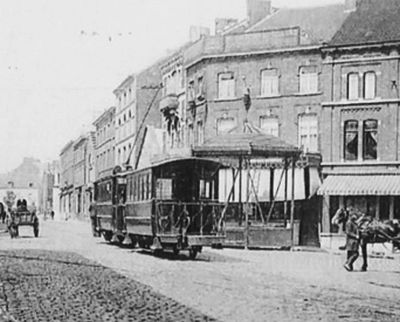
City tramway : Liège
City tramway : Verviers
Introduction
Verviers is a small city with (around 1880) about 80.000 inhabitants. It is situated on the river Vesdre. There was some wool processing industries in the city.
In 1884 two horse tram lines were opened in Verviers. For these, see the page about the horse tram in Verviers. The company was the "Tramways Verviétois" which was founded on 24 september 1883 afther which the horse tramway started on 1 july 1884.
Electric tram
In 1900 the two horse tram lines in the city were replaced by electric trams. In the same year a new line to Heusy (south of Verviers) was opened. Later on some more lines were opened
The line to Heusy was also used by the NMVB-tram line to Spa. That line started on 1909-08-03 and was closed in 1952-06-30.
The line to Renoupré was also used by the NMVB tram to Eupen. That line started on 1933-05-15 and was closed on 1956-02-20.
Maps
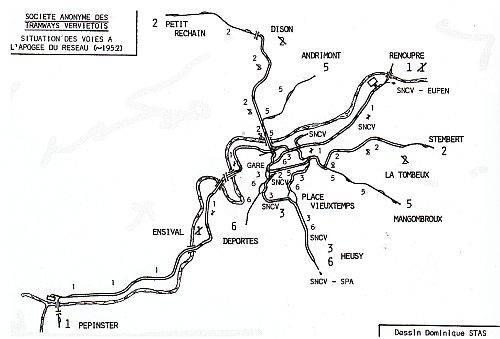
Lines
|
The line to Heusy was extended by the NMVB to Spa in 1909. The TV made exploitation of that line from 1911 to 1920. In that year the NMVB did exploitation of the line from Heusy to Spa itself, passengers had to change in Heusy. In 1920 trams of NMVB went over the tracks of TV to the railway station.
The depot for the electric lines of TV was situated in the eastern side of the city on line 1 near Reoupre.
Shortly after the NMVB closed the line from Verviers to Spa in 1952 and the line to Eupen in 1956, the closure of the TV-lines started:
- Line 5 (Andrimont - Centre - Mangombroux) closed in 1958.
- Line 1 (part Ensival - Pepinster) closed in 1962.
- Line 2 (Stembert - Centre - Rechain) closed in 1963.
- The last line in Verviers was closed on 31 december 1969.
In 1960 the TV was included in a new company VTC, which was included into the STIV in 1961.
Rolling Stock
For me the list of rolling stock is not yet complete, some pieces are unknown to me. Below you find what is known to me:
Motor coaches
|
Sen = Ateliers de Seneffe, Godarville
Niv = Ateliers Métallurgiques de Nivelles
Eloi = Ateliers Saint-Eloi, Edingen
Trailer coaches
|
Fotos
Postcards
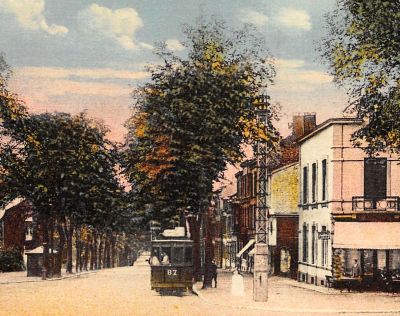
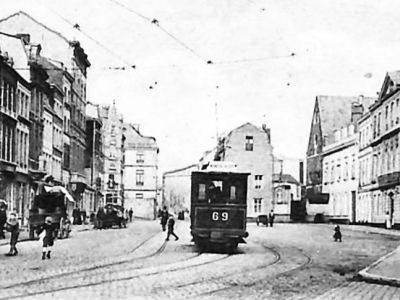
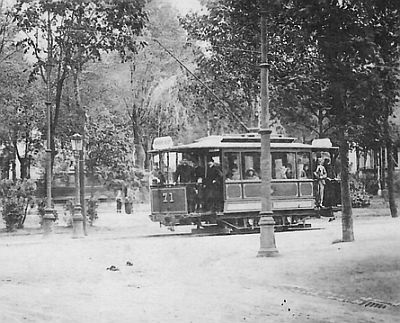
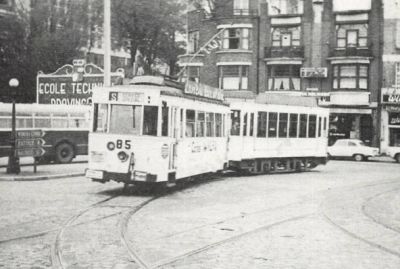
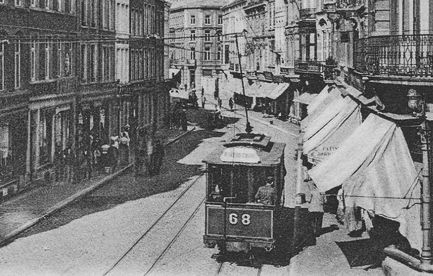
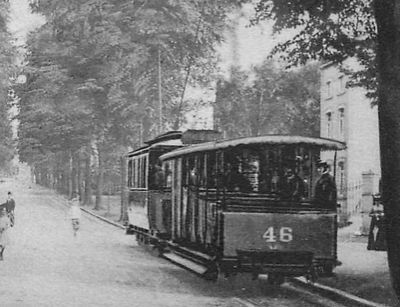
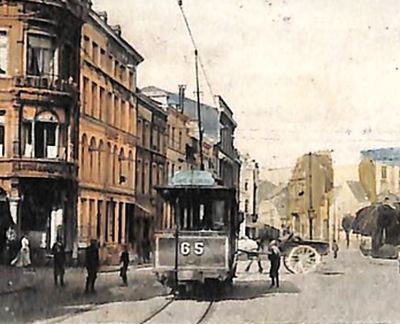
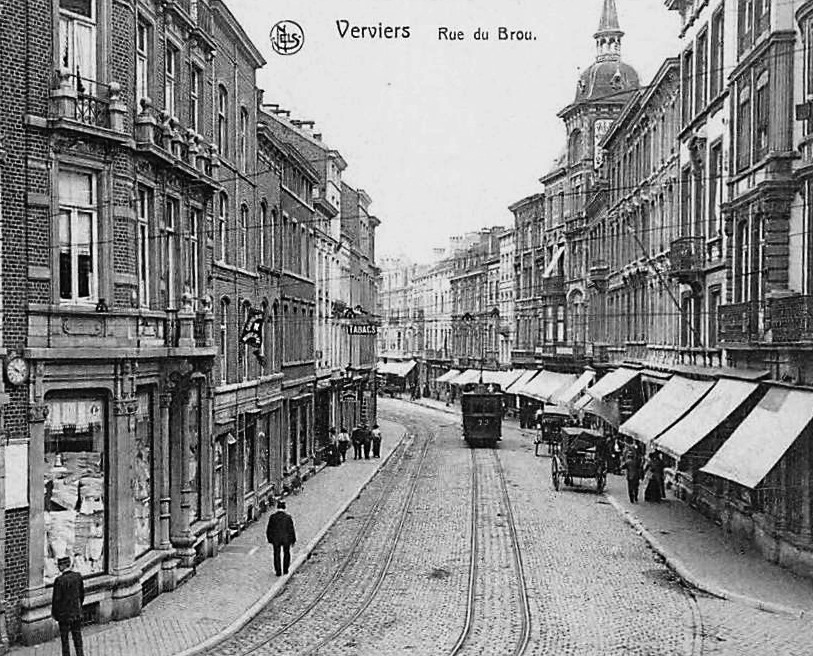
More information
More information of the trams in Verviers can be found on the page of the Tramways Verviétois on Wikipedia.
the websites of Wim Kusee

